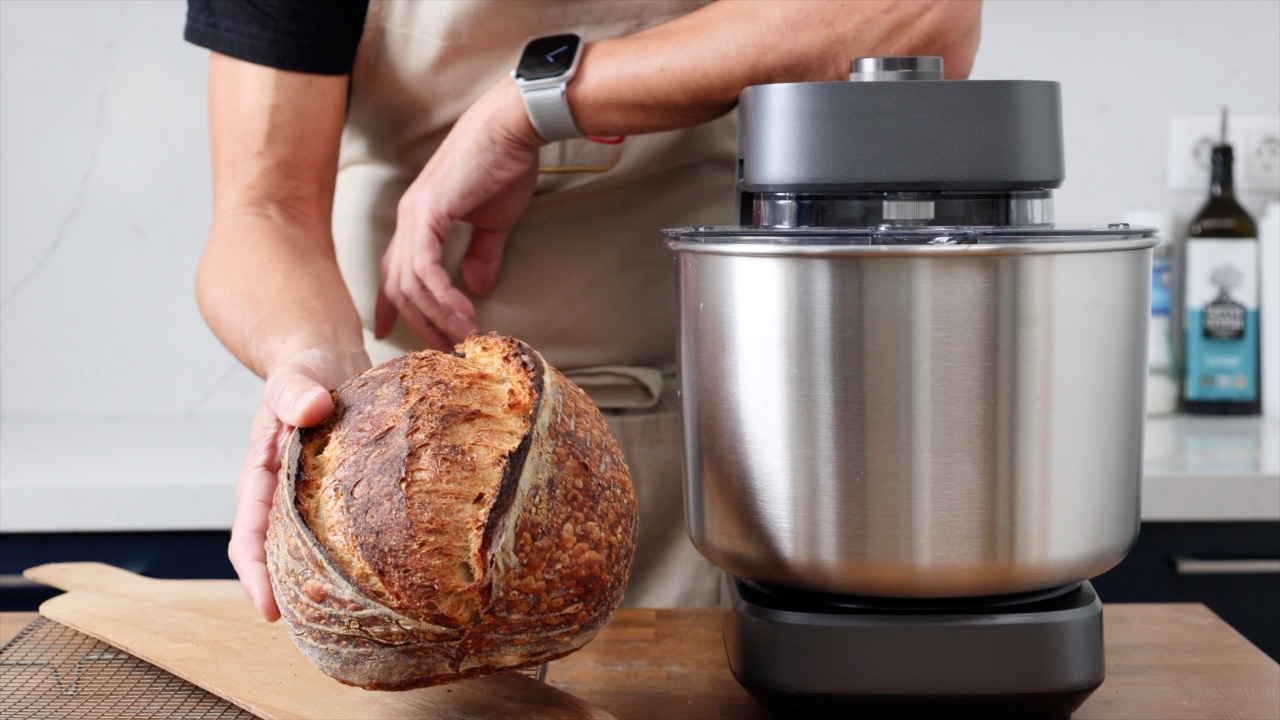How to Freeze and Reheat Sourdough Successfully

Sourdough bread freezes extremely well and when done properly means we can enjoy our sourdough even when we are too busy to bake. It is also a fantastic way to avoid waste.
Until recently I wouldn’t consider freezing my sourdough bread. I liked the idea that we had an abundance of freshly baked bread at home. But the reality was a little different, sometimes I was too busy to bake, but what worried me more was the amount of waste.
If you haven't tried freezing sourdough I’d encourage you to give it a go. Why don’t you try baking two loaves together and save yourself some time? You can enjoy one loaf fresh and pop the other on in the freezer for back up.
I'm going to share my two favourite ways of freezing and reheating sourdough bread. Don't forget to watch the video at the end of this blog!
First up: The king of convenience - Pre-slicing sourdough
If I could only choose one method of freezing sourdough, this would be it. After the sourdough loaf has cooled I slice the entire loaf. It's extremely important that you let sourdough bread cool completely before freezing.
I cut small pieces of non-stick baking paper and place them between the slices. I label and date a ziplock bag with a marker and slide the whole loaf inside. I squeeze out the excess air and seal the bag.
I like using ziplock bags as they are easily cleaned and reused. If your marker is tricky to remove you can try a touch of nail polish remover dabbed on a piece of kitchen paper. I use this trick all the time for removing marker pen from plastic containers and bags. My wife is continually baffled as to why she’s using so much nail polish remover! Don't throw the little pieces of paper away either, they can be re-used many times.
Pop the sourdough into the freezer and make sure that it doesn’t get buried at the bottom of the drawer.
The slices can be used as and when they are needed. After removing from the freezer they only take a few minutes to defrost. I often use the slices for toasting and they don’t even need defrosting first.
The slices can be diced up and roasted in the oven with olive oil and garlic to make croutons. They are also great to use for grilled or toasted sandwiches. But if you are going to use a filling I would suggest defrosting the bread before grilling or toasting.
Your imagination is the only limitation to what can be done with these frozen slices.
Don’t forget you can also freeze any sourdough that is getting a little old and in danger of drying out. Just slice and keep in a separate ziplock bag.
Method 2, as close as you can get to the real deal
Whole un-cut sourdough also freezes extremely well. The first steps are the same, the loaf is allowed to cool completely after baking. The loaf is popped into a ziplock bag that has been labelled, and then it’s placed in the freezer.
When it’s time to use the loaf it can be removed from the freezer and allowed to defrost inside the bag. I defrosted a loaf this morning and it took three hours at a room temperature of 28C / 82F.
After the loaf has defrosted I slide it into an oven that has been pre-heated to 150C / 300F. I place it directly on the oven shelf, cover it with a large pot and bake it for ten minutes. I remove the pot and let it bake uncovered until the crust is nice and crisp, normally about five more minutes.
Covering the loaf with a pot stops the loaf from drying out before warming through. You could also use a casserole pan or a baking cloche. If you don’t have anything large enough to cover the loaf then silver foil could be used as a last resort.
Leave the sourdough to cool properly to room temperature and use as you would any other freshly baked bread.
I know that many people spray their bread with water before reheating. I’ve tested both methods and haven’t found any benefit to spritzing my sourdough so I don’t do it. But if you want to try it then you should experiment, nothing will go drastically wrong!
I have also tried part baking the sourdough the first time around. This involves stopping the baking process before the crust has coloured fully, and then cooling and freezing the loaf. But when I bake it for the second time the crust never develops as well as when I bake it fully on the first bake.
I’ve also tried re-heating the sourdough from frozen, using two techniques, starting in a cold oven and a pre-heated oven. Neither worked particularly well with the outer crust and crumb drying out before the loaf was baked through to the centre.
Defrosting the loaf is definitely the best way to go and you’ll save money with the reduced use of the oven.
My verdict
These two methods produce an amazing result. I always keep one pre-sliced loaf and one whole loaf in the freezer on standby.
They will keep for an ice age in the freezer but I’d advise using them within 4-8 weeks for the best result.
My Old Faithful sourdough freezes particularly well so it’s well worth baking if you are looking to freeze your sourdough.
If you enjoyed this and would like to support ongoing content creation and help keep the website ad-free, you can click below to make a contribution.
As an Amazon Associate, I earn from qualifying purchases.


